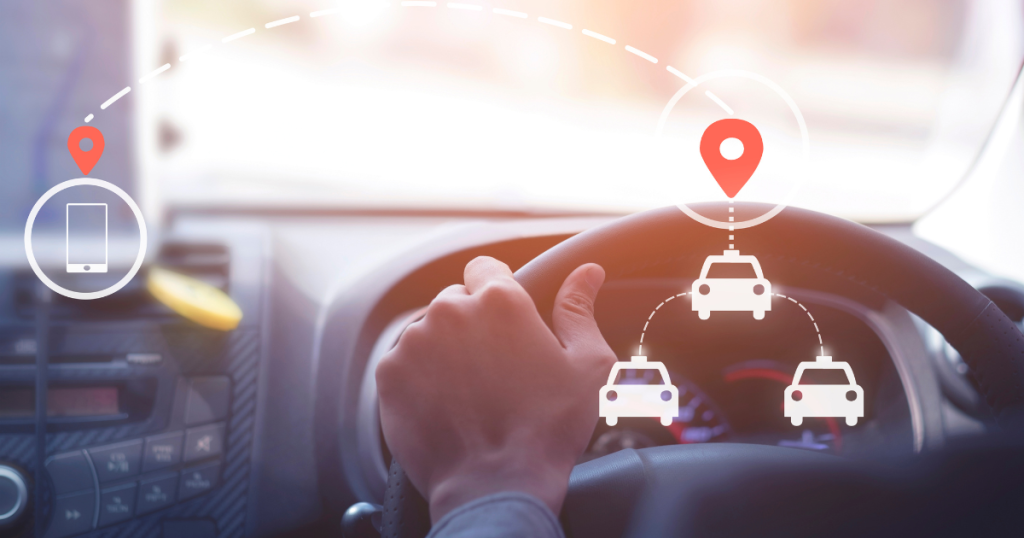Ridesharing or delivering as a gig worker during inclement weather can be a tricky and sometimes dangerous job. To ensure both the driver’s and passenger’s safety, we’ve rounded up some tips to keep in mind when driving or delivering in inclement weather, plus a few extra tips to make the process easier on you.
1. Assess the Risk
First things first – before you head out, check the weather forecast and plan accordingly. If heavy snow, rain, or wind is expected, reconsider taking a shift. Driving in treacherous conditions can be dangerous and may not be worth the risk. You might also check if your gig app offers a bonus for rides or deliveries made during harsh weather events to decide whether it’s worth the effort.
2. Prepare Your Vehicle
Make sure your vehicle is prepared for any weather conditions you could face. Check that your tires have enough tread, brakes are functioning properly, windshield wipers are working and that your vehicle has enough windshield washer fluid. Also, make sure you have a shovel and ice scraper in case of heavy snowfall.
Additional Reading: 13 Amazing Car Accessories You Need to Make Rideshare Driving Smoother
3. Keep Your Passengers Safe
If you’re driving passengers, keep safety at the forefront of your mind. Slow down to compensate for poor visibility due to fog or rain and be extra cautious when making turns or coming to sudden stops. Provide passengers with blankets or other items if they are cold in order to ensure their comfort and safety throughout the trip.
4. Stay Alert
When driving in inclement weather, it’s important to stay alert while behind the wheel. Avoid distractions like texting and eating or drinking from cups so that you can focus on the road ahead. Don’t forget to increase the following distance between you and the car in front of you to give yourself more time to react in the event of a sudden stop or turn.
5. Don’t Take Unnecessary Risks
Even if you’re comfortable driving on icy or snowy roads, it’s important to remember that your passengers may not be as prepared or experienced as you are. Always err on the side of caution and don’t take unnecessary risks when navigating inclement weather. If necessary, pull over and wait for conditions to improve before continuing.
6. Dress Appropriately
You will want to dress appropriately for cold and wet weather. Wear layers to stay warm, waterproof shoes and jackets, and a hat or hood if necessary. In addition, make sure you have all the supplies you will need in case of an unexpected breakdown or accident – including snacks and water, a flashlight, a first aid kit, jumper cables, flares or reflectors for visibility, and a phone charger.

7. Map Out the Right Roads
Even if you’re familiar with the area, inclement weather can make roads slippery and difficult to navigate. Map out the route ahead of time and be sure to take only roads that are well-maintained and have been treated for snow or ice. Avoid back roads and hills whenever possible, as these can often become quickly blocked in icy conditions and are low on the priority list.
8. Keep Your Car Toasty
If you’re ridesharing, keep in mind how cold incoming passengers will be. While you might be comfortable and think it’s time to turn off the heat, just know that you’ve had time to acclimate while a freezing customer has not. Try and find a balance where you feel comfortable, but you’re still keeping the car warm enough for your next ride.
9. Get Water-Proof Mats
Things are bound to get messy in the snow and rain. No matter how careful you or your passengers are, accidents can still happen in inclement weather. To protect your vehicle’s carpets and seats from mud and slush, invest in a set of water-proof floor mats. This will save you the time and expense of having to clean up the interior after every trip. Plus, riders can feel more comfortable without having to worry about something they cannot help.
10. Watch for Black Ice
One of the most dangerous conditions for drivers is black ice, which can’t be easily seen on roadways. This makes it one of the most dangerous obstacles you face during inclement weather. Be sure to watch for patches of black ice, especially when driving around curves and bridges. Also pay attention to other drivers who might be reacting strangely if they do come across a patch of black ice. That’s right, you’ll also need to be vigilant for the things you can’t necessarily see as well.
11. Learn How to Drive in the Snow
As obvious as that might sound, it is striking how many gig workers get caught in a tough situation after going out when they’re unfamiliar with snow driving. Here is a look at specific tips for driving in the snow.
Maintaining control when driving in snow is essential for both your safety and the safety of your passengers. The key is to slow down, stay alert, and remember that you may face icy or slippery patches while on the road. Here are some additional tips to keep in mind:
1. Slow Down: Make sure to drive at a safe speed in order to maintain control of your vehicle when navigating snow-covered roads.
2. Don’t Brake Hard: If you anticipate ice or snow, resist the temptation to brake suddenly as it can cause your car to skid and lose control.
3. Use Low Gears: When driving on icy roads, use a low gear in order to maintain control of your vehicle and avoid skidding.
4. Don’t Spin Your Wheels: If you find yourself stuck in the snow, don’t spin your wheels as this will only make it harder for you to get out. Instead, rock the car back and forth until you gain momentum and can get out of the snow-filled area.
The Bottom Line
Following these tips can help make your rideshare driving experience safer and more enjoyable in inclement weather conditions. Just remember to stay alert, drive slowly, and pay careful attention to road conditions so that you and your passengers arrive at their destination safely.
